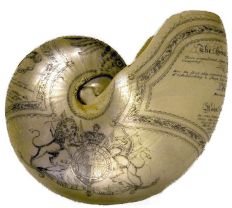Demounting, cleaning, conserving and remounting a 140 million year old fossil tree for Dorset County Museum.
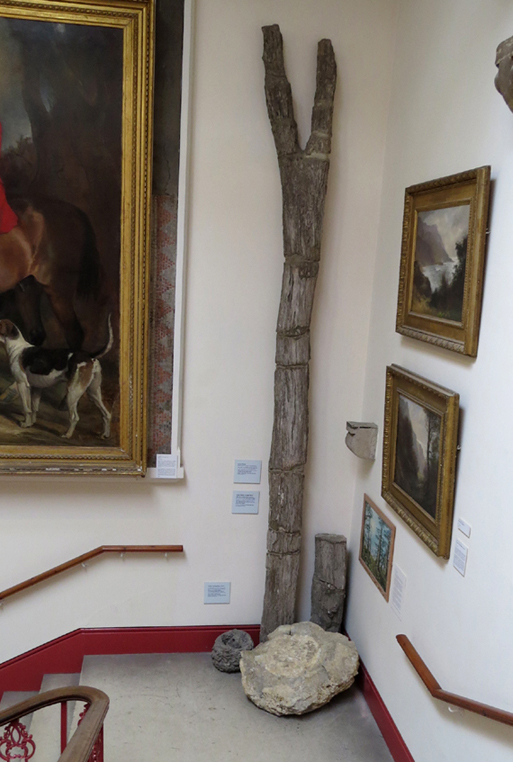 This fossil conifer tree from the Jurassic of Portland, Dorset, (shown here on the right) had been on display on the stairwell at Dorset County Museum in Dorchester for decades. As part of the recent major redevelopment project
Nigel Larkin was asked to dismantle it, then clean and conserve it ready for re-installation in the new galleries. First, he recorded the tree in detail with hundreds of photographs.
Thankfully, the 4.5m tall tree consists of multiple pieces joined together with mortar though some sections weighed up to 90 kg (the whole tree weighs about 390kg). It was held to the wall with mortar that had to be chiselled away -
whilst standing on scaffolding on the stairwell... There were a few retaining straps secured to the wall within the mortar.
All the pieces were carefully labelled to retain their relative assocations and packed in archival materials in sturdy crates and were taken to Nigel's conservation
studio in Shropshire.
This fossil conifer tree from the Jurassic of Portland, Dorset, (shown here on the right) had been on display on the stairwell at Dorset County Museum in Dorchester for decades. As part of the recent major redevelopment project
Nigel Larkin was asked to dismantle it, then clean and conserve it ready for re-installation in the new galleries. First, he recorded the tree in detail with hundreds of photographs.
Thankfully, the 4.5m tall tree consists of multiple pieces joined together with mortar though some sections weighed up to 90 kg (the whole tree weighs about 390kg). It was held to the wall with mortar that had to be chiselled away -
whilst standing on scaffolding on the stairwell... There were a few retaining straps secured to the wall within the mortar.
All the pieces were carefully labelled to retain their relative assocations and packed in archival materials in sturdy crates and were taken to Nigel's conservation
studio in Shropshire.
In his conservation studio, the sections were cleaned and loose mortar removed. Not only was there many decades' worth of dirt and grime deeply embedded in the rough texture of the fossil and there were some splatters of paint on the surface, there were still the
remains of ivy and moss on the specimen from where it used to stand outside against a local house. A pneumatic airabrasive unit utilising compressed air laced with
sodium bicarbonate (the gentlest of the cleaning powders available to use) removed all traces of vegetation as well as the dirt from the surface of the specimen a millimetre at a time under magnification.
Clean compressed air was then used to remove any remaining dust, dirt or powder. As the surfaces were friable, they were treated with the (reversible) conservation consolidant Paraloid B72 in acetone at 5%.
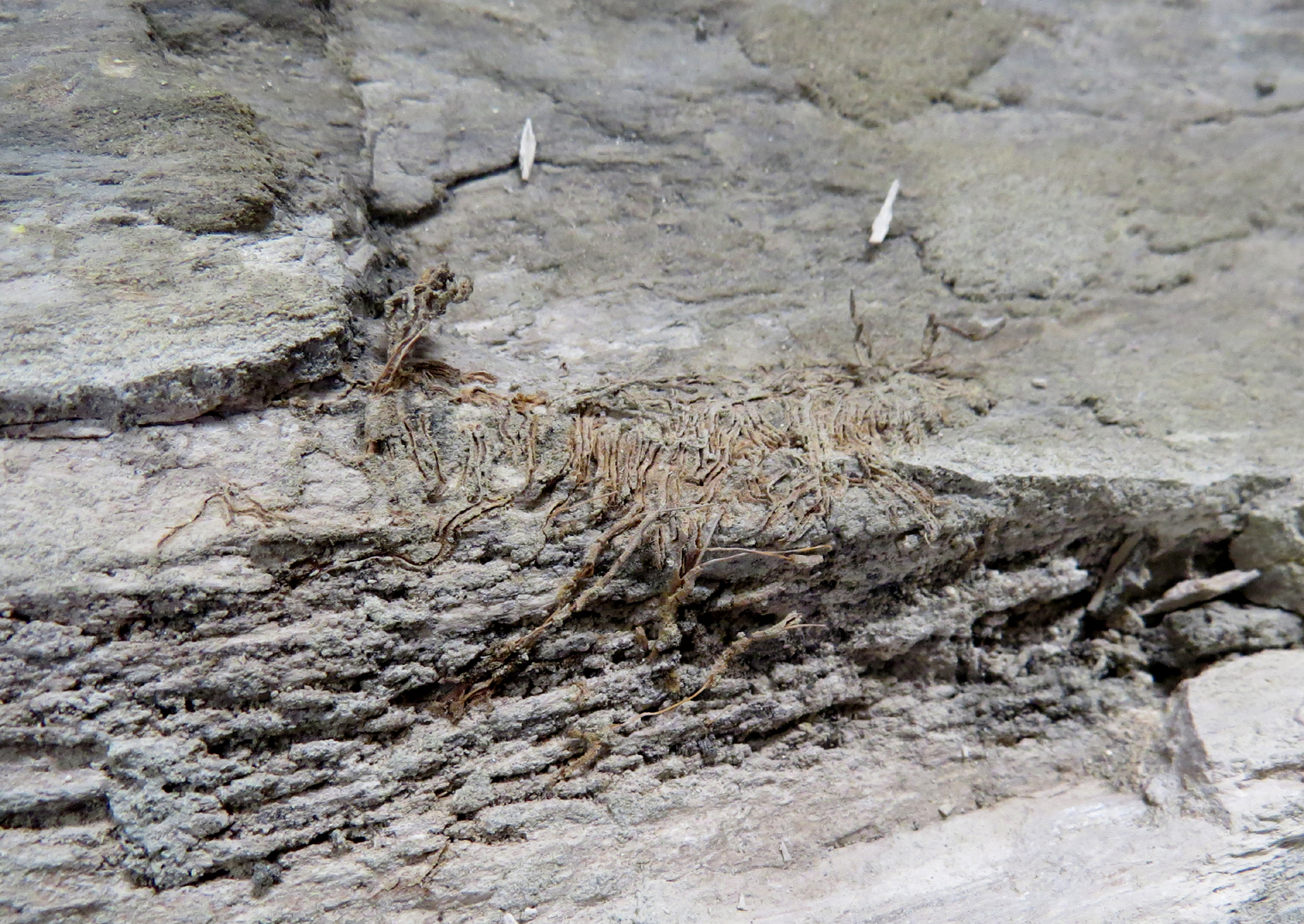
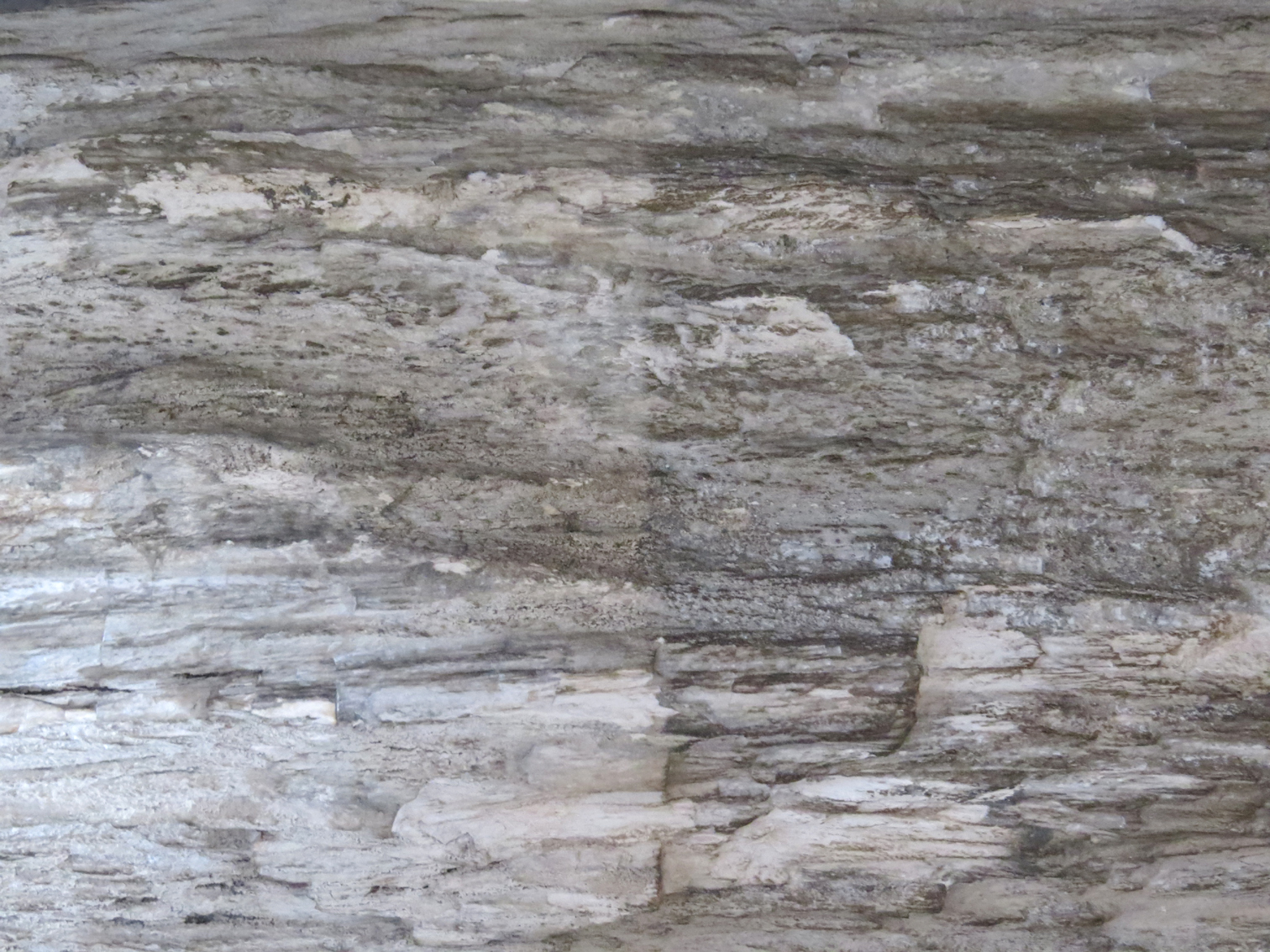
Above: an example of the dead and dried lichen to be removed; one section halfway through cleaning (still dirty on the right half).
Nigel liaised closely with the project's mountmakers and then installed the specimen on its bespoke metal mount.
He hoisted the sections into position using his bespoke gantry made for this project,
and he joined the sections together with lime mortar which he painted to match the fossil wood.
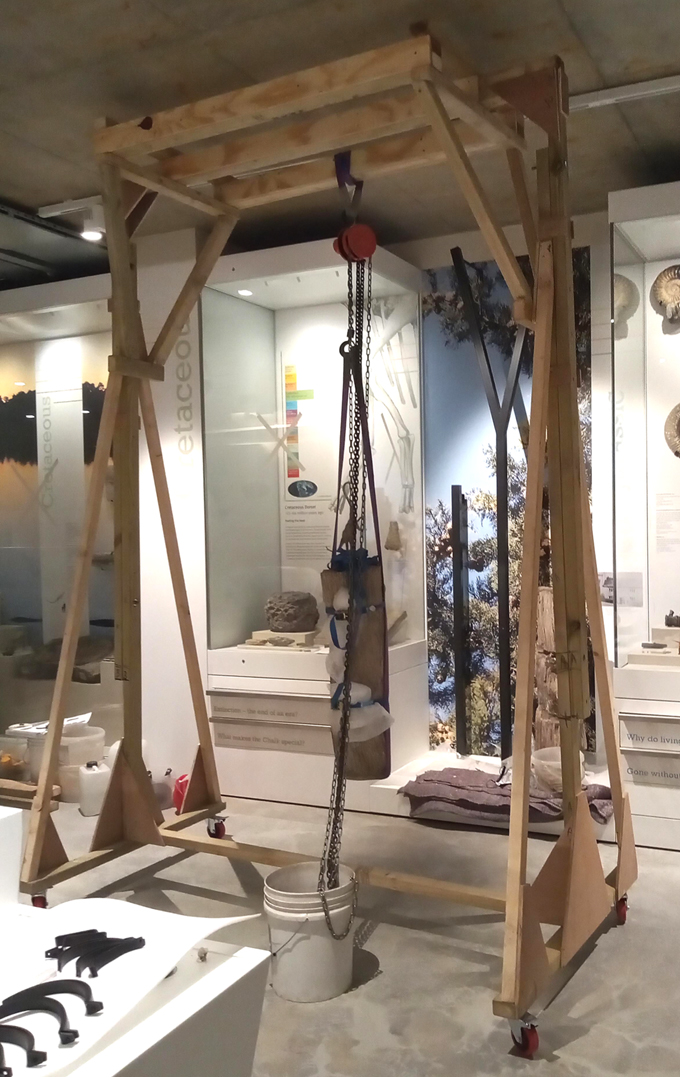
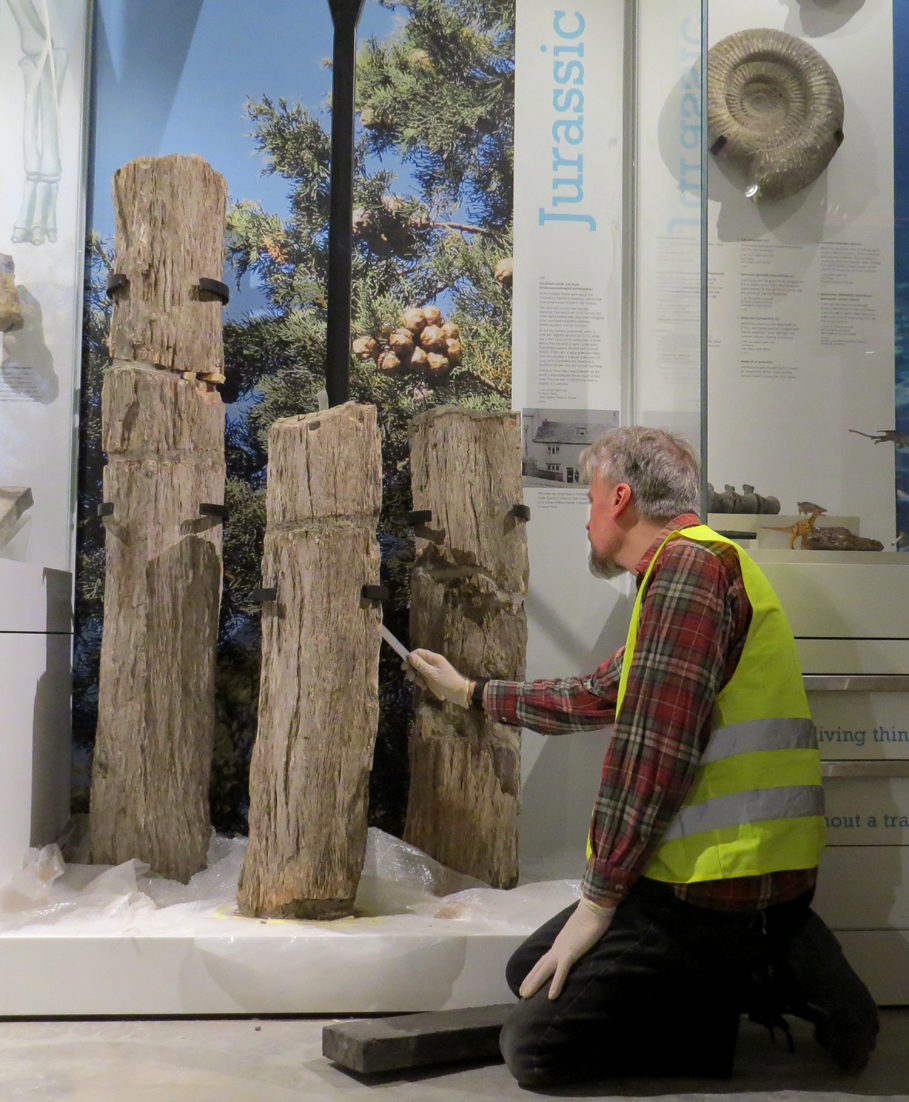
Above: hoisting a section in to place; applying lime mortar between the sections.

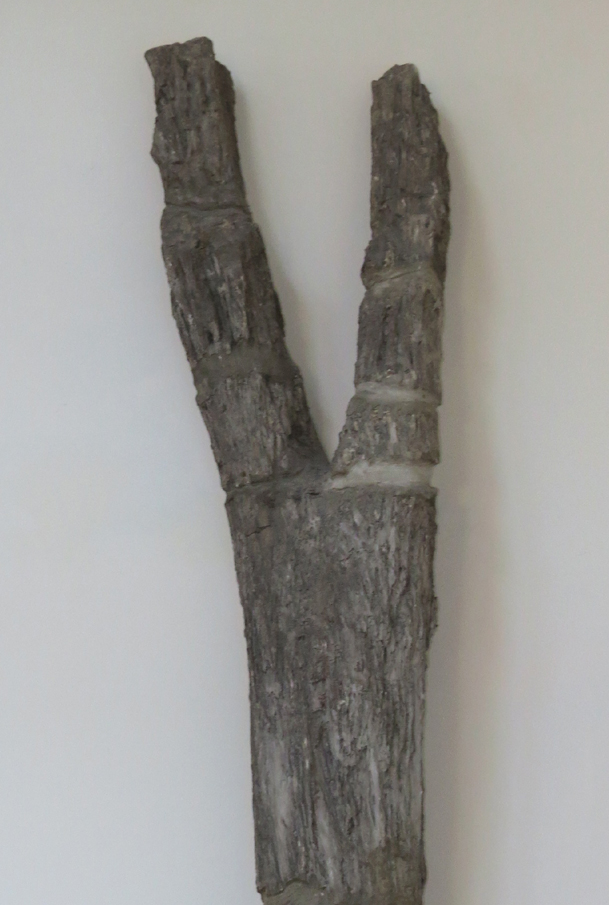
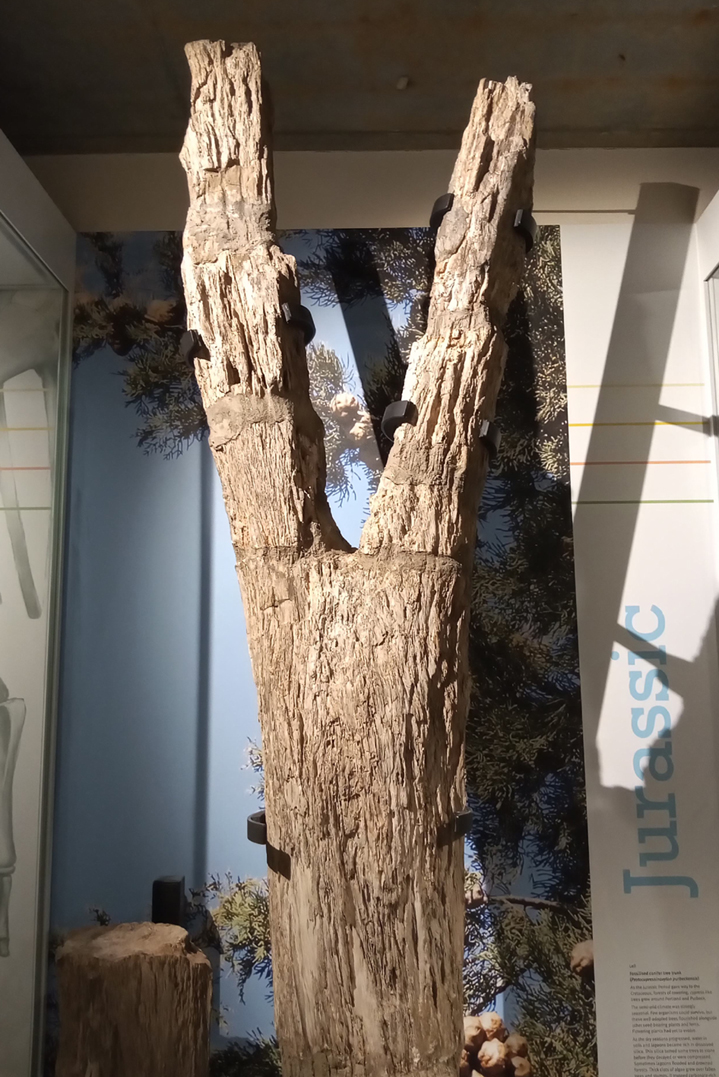
Above left to right: The fossil tree after installation was completed; the top of the tree in its original position before dismantling and cleaning; and
the top of the tree after cleaning and installation.
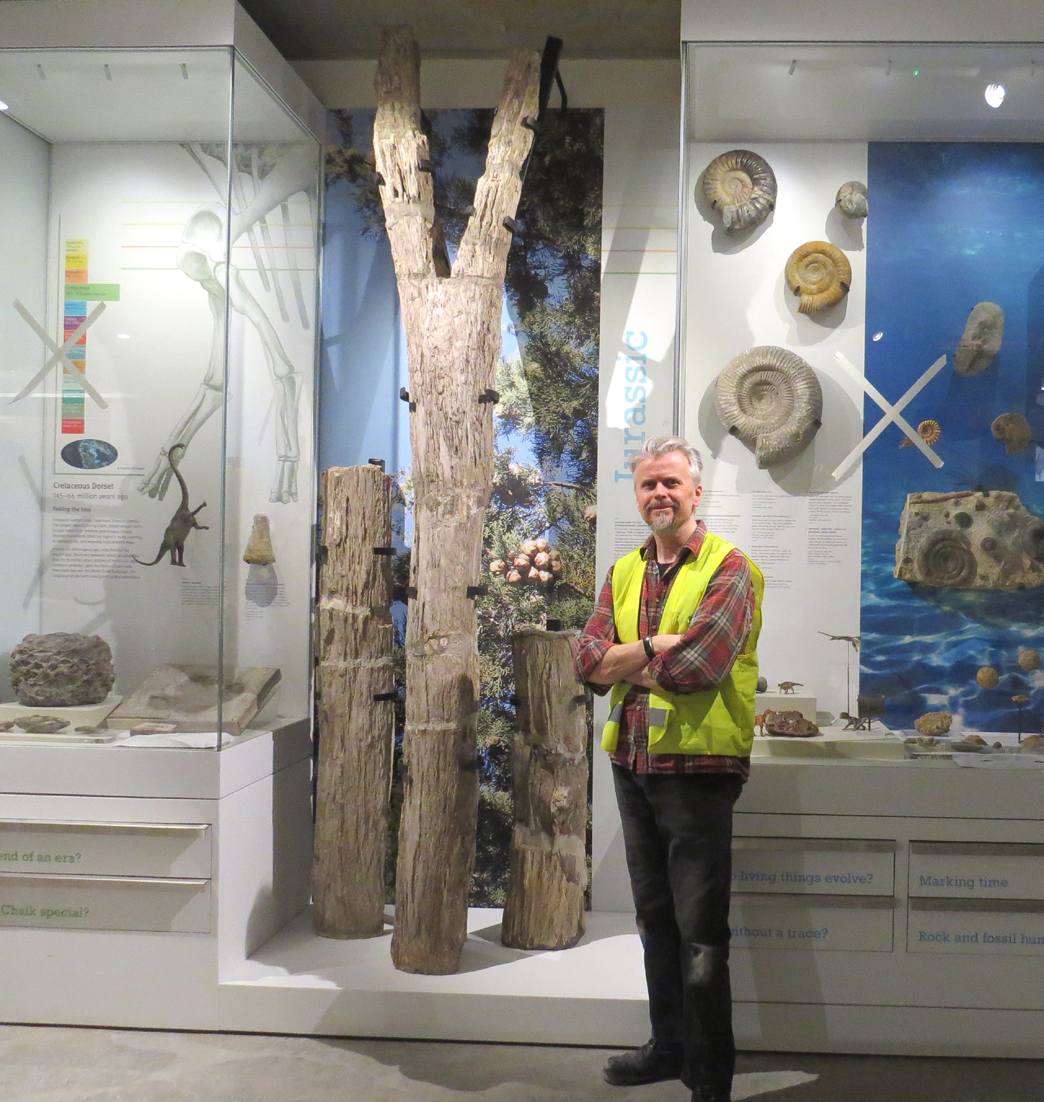

Above: The installed fossil tree with Nigel Larkin for scale. To the right of him are three fossil marine reptile specimens on display that he completely dismantled,
cleaned and conserved during the redevelopment of the old geology gallery fourteen years previously!
For more details about what we can do for you, or for a quote, please
contact:
enquiries@natural-history-conservation.com
We
are members of the United Kingdom Institute for Conservation of Historic and
Artistic Works
